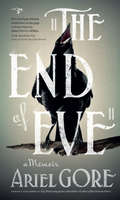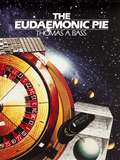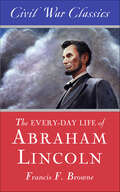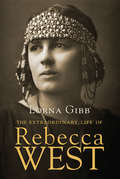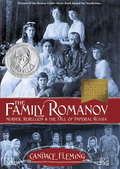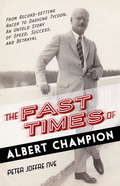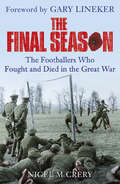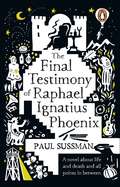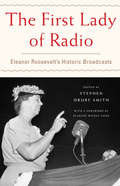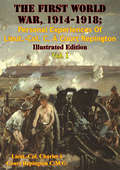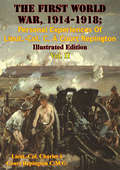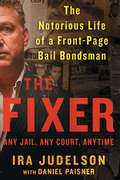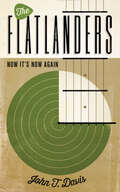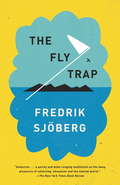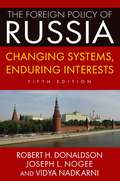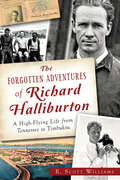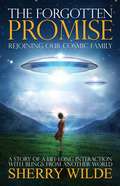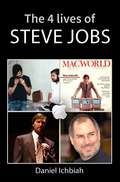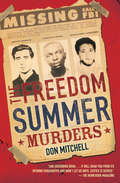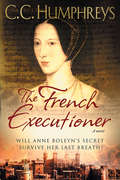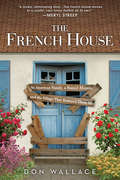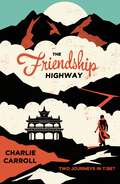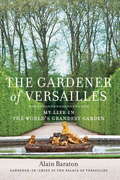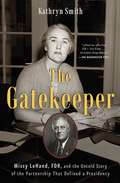- Table View
- List View
The End of Eve: A Memoir
by Ariel GoreAt age 39, Ariel Gore has everything she's always wanted: a successful writing career, a long-term partnership, a beautiful if tiny home, a daughter in college and a son in preschool. But life's happy endings don't always last. If it's not one thing, after all, it's your mother. Her name is Eve. Her epic temper tantrums have already gotten her banned from three cab companies in Portland. And she's here to announce that she's dying. "Pitifully, Ariel," she sighs. "You're all I have." Ariel doesn't want to take care of her crazy dying mother, but she knows she will. It's the right thing to do, isn't it? And, anyway, how long could it go on? "Don't worry," Eve says. "If I'm ever a burden, I'll just blow my brains out." Amidst the chaos of clowns and hospice workers, pie and too much whiskey, Ariel's own ten-year relationship begins to unravel. Darkly humorous and intimately human, The End of Eve redefines the meaning of family and everything we've ever been taught to call "love."
The Eudaemonic Pie
by Thomas A. BassA classic story about beating roulette with the world's first wearable computers. "A veritable piñata of a book," said The New York Times, which ranges from the invention of personal computers through the history of gambling to breaking the bank in Las Vegas. "Bass has done the best job so far of capturing the marriage of technical imagination and communal coziness that gave rise to Silicon Valley," said the Los Angeles Times. "An extraordinary story," said Nature. "Behind the fun and games there lies an economic parable for the decade just passed." A madcap adventure and insanely comedic, this is "an astonishing and fascinating tale of scientific heroism," said Richard Dawkins.
The Every-Day Life of Abraham Lincoln (Civil War Classics)
by Francis F. BrowneTo commemorate the 150th Anniversary of the end of the Civil War, Diversion Books is publishing seminal works of the era: stories told by the men and women who led, who fought, and who lived in an America that had come apart at the seams.A time and place as complex as Civil War America needed a leader as complex as Abraham Lincoln. These stories reveal new depths of our 16th President as a family man, a statesman, and a leader.
The Extraordinary Life of Rebecca West: A Biography
by Lorna GibbRebecca West was a leading figure in the twentieth century literary scene. A passionate suffragist, socialist, fiercely intelligent, Rebecca West began her career as a writer with articles in The Freewoman and The Clarion. Her first book, a biography of Henry James, was published when she was only twenty-four, and her first novel followed just two years later. She had a notorious affair with H.G. Wells, and their illegitimate son, Anthony, was born at the beginning of the First World War.The author of several novels, she is perhaps best remembered for her classic account of pre-war Yugoslavia, Black Lamb, Grey Falcon (published by Macmillan in 1941 and as relevant today as it was sixty years ago) and for her coverage of the Nuremberg Trials. When she died in 1983 at the age of 90, William Shawn, then editor-in-chief of the New Yorker, said: "Rebecca West was one of the giants and will have a lasting place in English literature. No one in this century wrote more dazzling prose, or had more wit, or looked at the intricacies of human character and the ways of the world more intelligently." Formidably talented, West was a towering figure in the British literary landscape. Lorna Gibb's vivid and insightful biography affords a dazzling insight into her life and work.
The Family Romanov: Murder, Rebellion, and the Fall of Imperial Russia
by Candace Fleming"Marrying the intimate family portrait of Heiligman's Charles and Emma with the politics and intrigue of Sheinkin's Bomb, Fleming has outdone herself with this riveting work of narrative nonfiction that appeals to the imagination as much as the intellect." --The Horn Book, StarredFrom the acclaimed author of Amelia Lost and The Lincolns comes a heartrending narrative nonfiction page-turner--and a perfect resource for meeting Common Core standards. When Russia's last tsar, Nicholas II, inherited the throne in 1894, he was unprepared to do so. With their four daughters (including Anastasia) and only son, a hemophiliac, Nicholas and his reclusive wife, Alexandra, buried their heads in the sand, living a life of opulence as World War I raged outside their door and political unrest grew into the Russian Revolution.Deftly maneuvering between the lives of the Romanovs and the plight of Russia's peasants and urban workers--and their eventual uprising--Fleming offers up a fascinating portrait, complete with inserts featuring period photographs and compelling primary-source material that brings it all to life."An exhilarating narrative history of a doomed and clueless family and empire." --Jim Murphy, author of Newbery Honor Books An American Plague and The Great Fire"For readers who regard history as dull, Fleming's extraordinary book is proof positive that, on the contrary, it is endlessly fascinating, absorbing as any novel, and the stuff of an altogether memorable reading experience." --Booklist, Starred<P><P> Winner of the Sibert Honor
The Family of Abraham
by Carol BakhosThe term "Abrahamic religions" has gained considerable currency in both scholarly and ecumenical circles as a way of referring to Judaism, Christianity, and Islam. In The Family of Abraham, Carol Bakhos steps back from this convention to ask a frequently overlooked question: What, in fact, is Abrahamic about these three faiths? Exploring diverse stories and interpretations relating to the portrayal of Abraham, she reveals how he is venerated in these different scriptural traditions and how scriptural narratives have been pressed into service for nonreligious purposes. Grounding her study in a close examination of ancient Jewish textual practices, primarily midrash, as well as medieval Muslim Stories of the Prophets and the writings of the early Church Fathers, Bakhos demonstrates that ancient and early-medieval readers often embellished the image of Abraham and his family--Sarah, Hagar, Ishmael, and Isaac. Her analysis dismantles pernicious misrepresentations of Abraham's firstborn son, Ishmael, and provocatively challenges contemporary references to Judaism and Islam as sibling religions. As Bakhos points out, an uncritical adoption of the term "Abrahamic religions" not only blinds us to the diverse interpretations and traditions of Judaism, Christianity, and Islam but also artificially separates these faiths from their historical contexts. In correcting mistaken assumptions about the narrative and theological significance of Abraham, The Family of Abraham sheds new light on key figures of three world religions.
The Fast Times of Albert Champion
by Peter Joffre NyeRACER. INNOVATOR. CELEBRITY. MOGUL. CHAMPION.This is the first biography of the short but exciting life of Albert Champion--record-setting bicyclist and motorcyclist, daredevil racecar driver, early automobile innovator, charismatic ladies' man, and celebrity of the Jazz Age. Though most Americans have heard of the companies Albert Champion founded--ACDelco and Champion Spark Plug--few know much about the charismatic man behind them. Like a Richard Branson of the early 20th century, or an Evel Knievel with a business degree, Champion was a powerhouse whose life was defined by both speed and success. Champion rose from poverty in Paris to great wealth and fame in both his native France and the United States. As a bicycle racer, Champion set more than a hundred world records. When the urban speed limit was 8 mph, he was the first ever to drive a motorcycle a mile under a minute. A car-racing crash snapped a leg bone that kept him in traction for eleven weeks. Undeterred, he hobbled out of the hospital on crutches and recovered to win the French national cycling championship. Champion invested his prize money to become a tycoon in the new and revolutionary American auto industry, working closely with the leading players and amassing thirty US. His contemporaries included Charles Lindbergh, who endorsed Champion's product by saying, "AC Spark Plugs kept my engine running perfectly."; Louis Chevrolet, whom Champion backed financially until it came out that he was trying to seduce Chevrolet's wife, which led to a fight and the end of their friendship; and William Durant, founder of a "new holding company" called General Motors. A notorious ladies' man, Champion's many dalliances were fodder for the papers and finally ended in a love triangle that resulted in his death under mysterious circumstances.From the Hardcover edition.
The Final Season: The Footballers Who Fought and Died in the Great War
by Nigel McCreryA moving narrative history of the professional footballers who fought and died in World War I, with a foreword by Gary Lineker.In 1914, as today, successful footballers were heroes and role models. They were the sporting superstars of their time; symbols of youth, health and vigour. Naturally enough, when war broke out they felt it was their duty to join up and fight. Between 1914 and 1918, 213 professional players fell in action. Some teams lost half their players, either killed or else so badly injured in mind and body that they were never to play again. The Final Season is the powerfully moving account of these young men who swapped the turf of the pitch and the cheers of the fans for the freezing mud of the battlefield and the terrible scream of shell fire. It follows them as they leave their fans and families behind, undergo training and then travel on to the bloody arenas of war: Ypres, Gallipoli, the Somme, Passchendaele. Nigel McCrery paints these men in vivid detail. From their achievements on the football pitch to their heroic conduct on the battlefield, we will learn of the selfless courage and determination they displayed in the face of adversity. For far too many, we will also learn when, and how, they made the ultimate sacrifice.
The Final Testimony of Raphael Ignatius Phoenix: clever, captivating, and idiosyncratic. You won’t forget this novel
by Paul SussmanThis page-turner with a difference by multimillion copy bestselling author Paul Sussman is a must-read for anyone looking for something original.'More than lives up to its promise... it's the first novel Sussman ever wrote, yet the things that made him such a distinctive writer - his boundless imagination, his love of the bizarre, his ability to keep a complex plot bowling along - are already firmly in place. The book is as darkly funny as it is original' - MAIL ON SUNDAY'A must-read. This deserves to be a classic.' -- ***** Reader review'Fantastic. An absolute joy throughout.' -- ***** Reader review'If you like Jona Jonasson books then you will get a real kick out of this one!' -- ***** Reader review*****************************************************'My name is Raphael Ignatius Phoenix and I am a hundred years old - or will be in ten days' time, in the early hours of January 1st, 2000, when I kill myself...'Raphael Ignatius Phoenix has had enough. Born at the beginning of the 20th century, he is determined to take his own life as the old millennium ends and the new one begins. But before he ends it all, he wants to get his affairs in order and put the record straight.Beginning with a fateful first adventure with Emily, the childhood friend who would become his constant companion, Raphael here remembers the multitude of experiences, the myriad encounters and, of course, the ten murders he committed along the way...And so begins one man's wholly unorthodox account of the twentieth century - or certainly his own riotous, often outrageous, somewhat unreliable and undoubtedly singular interpretation of it...
The First Lady of Radio
by Blanche Wiesen Cook Stephen Drury SmithOn the afternoon of December 7, 1941, as a stunned nation gathered around the radio to hear the latest about Pearl Harbor, Eleanor Roosevelt was preparing for her weekly Sunday evening national radio program. At 6:45pm, listeners to the NBC Blue network heard the First Lady's calm, measured voice explain that the president was conferring with his top advisors to address the crisis. It was a remarkable broadcast. With America on the verge of war, the nation heard first not from their president, but from his wife.Eleanor Roosevelt's groundbreaking career as a professional radio broadcaster is almost entirely forgotten. As First Lady, she hosted a series of prime time programs that revolutionized how Americans related to their chief executive and his family. Now, The First Lady of Radio rescues these broadcasts from the archives, presenting a carefully curated sampling of transcripts of Roosevelt's most famous and influential radio shows, edited and set into context by award-winning author and radio producer Stephen Drury Smith. With a foreword by Roosevelt's famed biographer, historian Blanche Wiesen Cook, The First Lady of Radio is both a historical treasure and a fascinating window onto the power and the influence of a pioneering First Lady.
The First World War, 1914-1918; Personal Experiences Of Lieut.-Col. C. À Court Repington Vol. I [Illustrated Edition] (The First World War, 1914-1918; Personal Experiences Of Lieut.-Col. C. À Court Repington #1)
by Lieut.-Col. Charles à Court Repington C.M.G.Includes the First World War Illustrations Pack - 73 battle plans and diagrams and 198 photosA fascinating history of the First World War seen through the eyes of a highly respected and connected War Correspondent.Lieut.-Col. Charles à Court Repington was a career soldier in the British Army; renowned for his service in the Sudan, Burma and the Boer War, he was drummed out of the service for having an affair with the wife of British official in 1902. He was well known as an excellent staff officer and remained closely tied to the comrades that he had fought and served with including the future leaders of the British Army in the First World War. Cutting his teeth as a war correspondent during the Russo-Japanese War of 1904-1905, he was ideally placed as the War Correspondent of the Times when war broke out in 1914 to report on the unfolding tragedy. Using all of his connections and influence he visited the Western Front many times and was in intimate correspondence and contact with the senior figures of the British Army such as Sir John French, Sir Douglas Haig, Herbert Plumer and Horace Smith-Dorrien. No great respecter of private conversations or confidences he lost many friends when he wrote The First World War; his work was critical, well-written, caustic and unbiassed.These classic memoirs remain as valuable and vivid as they when they were written. This first volume covers the outbreak of the war to early 1917.
The First World War, 1914-1918; Personal Experiences Of Lieut.-Col. C. À Court Repington Vol. II [Illustrated Edition] (The First World War, 1914-1918; Personal Experiences Of Lieut.-Col. C. À Court Repington #2)
by Lieut.-Col. Charles à Court Repington C.M.G.Includes the First World War Illustrations Pack - 73 battle plans and diagrams and 198 photosA fascinating history of the First World War seen through the eyes of a highly respected and connected War Correspondent.Lieut.-Col. Charles à Court Repington was a career soldier in the British Army; renowned for his service in the Sudan, Burma and the Boer War, he was drummed out of the service for having an affair with the wife of British official in 1902. He was well known as an excellent staff officer and remained closely tied to the comrades that he had fought and served with including the future leaders of the British Army in the First World War. Cutting his teeth as a war correspondent during the Russo-Japanese War of 1904-1905, he was ideally placed as the War Correspondent of the Times when war broke out in 1914 to report on the unfolding tragedy. Using all of his connections and influence he visited the Western Front many times and was in intimate correspondence and contact with the senior figures of the British Army such as Sir John French, Sir Douglas Haig, Herbert Plumer and Horace Smith-Dorrien. No great respecter of private conversations or confidences he lost many friends when he wrote The First World War; his work was critical, well-written, caustic and unbiassed.These classic memoirs remain as valuable and vivid as they when they were written. This second volume covers the period from spring 1917 until the end of the war.
The Fixer
by Daniel Paisner Ira JudelsonFrom New York's foremost bail bondsman with "over $30 million on the street" comes the story of a modern-day "fixer" who walks a fine line between hustler and humanitarian with clients ranging from the rich and famous to the mafia and gangs of New York.With from-the-gut prose, Ira Judelson sheds light on the highs and lows of the bondsman life. But Judelson is no process server. He sees himself as a sort of modern day "macher"--using his juice as a bail bondsman to help friends old and new out of jams wherever he can. He is also a keenly observant and wildly charismatic insider who's seen it all. Prepare to be shocked, but also informed in The Fixer as Judelson reveals the unwritten laws of the courtroom and even prison--not to mention the shameless activities of his unbelievable list of clients, including former New York Giants Plaxico Burress and Lawrence Taylor; rappers Ol' Dirty Bastard, Ja Rule, Lil' Wayne, and DMX; comedian Katt Williams; notorious Manhattan madam Kristin Davis; and former IMF chief Dominique Strauss-Kahn. You'll see why the New York Times describes Judelson as "an inevitable entry in the BlackBerrys of New York defense lawyers, an ATM for desperate rappers, actors, athletes, executives, and madams with pocketbooks much fatter than his." The Fixer is a rollicking narrative that follows Judelson as he learns the ins and outs of the down-and-dirty world of bonds: which judge might let you slide, which ones have zero tolerance, which lawyers do pro bono for the right case, and the cops and DAs who believe in second chances. Judelson illuminates a world almost entirely opaque to the general public, but also entertains and informs with the inside scoop on the underbelly of the justice system.
The Flatlanders: Now It's Now Again (American Music Series)
by John T. Davis&“Conservative West Texas spawns radical creativity and lifelong bonds of friendship in this story of an unlikely band&” from the renowned music journalist (Kirkus Reviews). A group of three friends who made music in a house in Lubbock, Texas, recorded an album that wasn&’t released and went their separate ways into solo careers. That group became a legend and then—twenty years later—a band. The Flatlanders—Joe Ely, Jimmie Dale Gilmore, and Butch Hancock—are icons in American music, with songs blending country, folk, and rock that have influenced a long list of performers, including Robert Earl Keen, the Cowboy Junkies, Ryan Bingham, Terry Allen, John Hiatt, Hayes Carll, Lucinda Williams, Steve Earle, and Lyle Lovett. In The Flatlanders: Now It&’s Now Again, Austin author and music journalist John T. Davis traces the band&’s musical journey. He explores why music was, and is, so important in Lubbock and how earlier West Texas musicians such as Buddy Holly and Roy Orbison, as well as a touring Elvis Presley, inspired the young Ely, Gilmore, and Hancock. Davis recounts their first year (1972–1973) as a band, during which they recorded the songs that, decades later, were released as the albums More a Legend Than a Band and The Odessa Tapes. He follows the three musicians through their solo careers and into their first decade as a (re)united band, in which they cowrote songs for the first time on the albums Now Again and Hills and Valleys and recovered their extraordinary original demo tape, lost for forty years. Many roads later, the Flatlanders are finally both a legend and a band.
The Fly Trap
by Thomas Teal Fredrik SjöbergA Nature Book of the Year (The Times (UK))"The hoverflies are only props. No, not only, but to some extent. Here and there, my story is about something else." A mesmerizing memoir of extraordinary brilliance by an entomologist, The Fly Trap chronicles Fredrik Sjöberg's life collecting hoverflies on a remote island in Sweden. Warm and humorous, self-deprecating and contemplative, and a major best seller in its native country, The Fly Trap is a meditation on the unexpected beauty of small things and an exploration of the history of entomology itself. What drives the obsessive curiosity of collectors to catalog their finds? What is the importance of the hoverfly? As confounded by his unusual vocation as anyone, Sjöberg reflects on a range of ideas--the passage of time, art, lost loves--drawing on sources as disparate as D. H. Lawrence and the fascinating and nearly forgotten naturalist René Edmond Malaise. From the wilderness of Kamchatka to the loneliness of the Swedish isle he calls home, Sjöberg revels in the wonder of the natural world and leaves behind a trail of memorable images and stories.From the Hardcover edition.
The Foreign Policy of Russia: Changing Systems, Enduring Interests, 2014
by Robert H Donaldson Joseph L NogeeNow fully updated, this widely respected text traces the lineage and development of Russian foreign policy with the insight that comes from historical perspective. The fifth edition incorporates new and fully updated coverage of issues including relations with the major powers and with other post-communist states, international security issues including arms control issues and grounds for sanctions and intervention, and domestic and regional issues related to natural resource politics, human rights, Islamism and terrorism.perspective. Chronologically organized chapters highlight the continuities of Russias behavior in the world since tsarist times as well as the major sources of change and variability over the revolutionary period, wartime alliances and cold war, dtente, the Soviet collapse, and the first post-communist decades. The fifth edition incorporates new and fully updated coverage of issues including relations with the major powers and with other post-communist states, international security issues including arms control issues and grounds for sanctions and intervention, and domestic and regional issues related to natural resource politics, human rights, Islamism and terrorism. New coauthor Vidya Nadkarni strengthens the books coverage of issues related to Asia. The basic framework used in the book is a modified realism that stresses the balance of power and the importance of national interest, and identifies several factors (both internal and external) that condition Russian policy. The interpretations are original and based on a mix of primary and secondary sources.
The Forgotten Adventures of Richard Halliburton: A High Flying Life from Tennessee to Timbuktu
by R. Scott WilliamsA biography of the charismatic world traveler whose daredevil exploits thrilled millions in the early twentieth century. Born in 1900, Richard Halliburton ran away from his hometown of Memphis, Tennessee, at the age of nineteen to lead an extraordinary and dramatic life of adventure. Against the backdrop of the Roaring Twenties and the Great Depression, Halliburton&’s exploits around the globe made him an internationally known celebrity and the most famous travel writer of his time. From climbing Mount Olympus in Greece to swimming the Panama Canal and flying all the way to Timbuktu, Halliburton experienced and wrote about adventures that others never even believed possible. His youthful spirit and bohemian lifestyle won the hearts of millions, and this absorbing biography tells his story. &“He was Marco Polo and Indiana Jones wrapped up in one, with P.T. Barnum&’s flippancy and James Bond&’s bravado, capped off by F. Scott Fitzgerald&’s aristocratic good looks and manners.&” —Smithsonian &“A concise new biography [that] covers the life of a man of marvels.&” —Memphis Magazine
The Forgotten Promise: Rejoining Our Cosmic Family
by Sherry WildeThis is the story of one woman's life-long interaction with beings from another world, and her journey to go beyond the fear to find meaning and purpose. In this book she explores the abduction experience and shares with you the three important things they insisted she learn. It is the author's belief that most people in this world have had at least one encounter with a being from another dimension or planet. Trying to integrate these kinds of events into your life, and still live what the world would consider a normal life, is pretty much impossible. This book is not only a recounting of her experiences, but the story of how she discovered that, like most things, it is possible to turn the worst thing in your life into something positive, just by choosing to look at it from a different perspective.
The Four Lives of Steve Jobs: Steve Jobs biography
by Daniel IchbiahThe Four Lives of Steve Jobs Daniel Ichbiah No. 1 on the best-sellers list in August 2011 (French version). New edition updated in 2016 "So at thirty I was out. And very publicly out. What had been the focus of my entire adult life was gone, and it was devastating… …I didn't see it then, but it turned out that getting fired from Apple was the best thing that could have ever happened to me." This was Steve Jobs' confession on that morning in June 2005 to students at Stanford University. It summed up the growth that was slowly taking place in him. Chased out of Apple like scum in 1985, Jobs had made a resounding comeback ten years later and gave us devices that left a mark on their time, such as the iPod, iPhone and iPad. The world's most admired CEO, Steve Jobs mostly went against the tide, driven by a vision of genius and an extraordinary strength of conviction. However, he could also get it wrong: he was the one who nearly ruined Apple in 1984 after launching the Macintosh by insisting on poor technical choices! The 4 lives of Steve Jobs depicts Jobs' troubled youth, his rise to glory following the founding of Apple, his disgrace and his vain attempt at revenge followed by a return to the top. It also reveals a thousand unexpected facets of the extraordinary artist who ran Apple. * His quest for enlightenment in India * His initial refusal to recogniae the paternity of his daughter Lisa * His relationship with folk singer Joan Baez * The search for his mother, who abandoned him at birth * The attempt to treat his cancer with a vegetarian diet In his own way, Steve Jobs never stopped wanting to change the world, to change life... A best-seller Published by Leduc Editions in April 2011, the French version of The Four Lives of Steve Jobs was a number one best-seller at the end of August, 2011.
The Freedom Summer Murders
by Don MitchellA gripping true story of murder and the fight for civil rights and social justice in 1960s Mississppi.On June 21, 1964, three young men were killed by the Ku Klux Klan for trying to help black Americans vote as part of the 1964 Fredom Summer registration effort in Mississippi. The disappearance and brutal murders of James Chaney, Andrew Goodman, and Michael Schwerner caused a national uproar and was one of the most significant events of the civil rights movement.The Freedom Summer Murders tells the tragic story of these brave men, the crime that resulted in their untimely deaths, and the relentless forty-one-year pursuit of a conviction. It is the story of idealistic and courageous young people who wanted to change their county for the better. It is the story of black and white. And ultimately, it is the story of our nation's endless struggle to close the gap between what is and what should be.
The French Executioner
by C. C. HumphreysThe last thing Jean Rombaud expects upon being summoned to behead Anne Boleyn is to dedicate his life to her. But the ill-fated queen has a mysterious request for her executioner: that after taking her life he also take her infamous six-fingered hand and bury it at a sacred crossroads in France. His oath will set Jean on the most dangerous journey of his life.In The French Executioner, C.C. Humphreys once again brings the past to life in all its glory and peril. This thrilling novel captures the breathtaking story of how courage, love, and loyalty bound Anne Boleyn to the man who ended her life--and saved her legacy."Humphreys has fashioned a rollicking good yarn that keeps the pages turning from start to finish."--Irish Examiner"A wonderful saga of magic and heroism. If you can find a first impression, hoard it and wait till it rises in value like a first edition of Lord of the Rings. This is as good."--Crime Time, UK"A brilliant, brutal, and absorbing historical thriller on the real-life figure of Jean Rombaud, the man who beheaded Anne Boleyn."--Northern Echo"An entertaining read--a charming page turner."--Edmonton Journal"Lightning paced."--Publishing News
The French House
by Don Wallace"On a tiny French island, a couple of American dreamers redefine their lives by restoring a ruin--which in this lovely, shimmering story becomes a parable of a saner, greener, more sustainable path that we all can follow if we will but listen to the wisdom of the villagers the way the Wallaces did. The French House moves to a soulful, very funny rhythm all its own."--Meryl Streep "A brave, insightful, and very amusing memoir about a fantasy that many of us have had but not dared to attempt."--Jane Smiley When life hands you lemons, make citron pressé. Shortly after Don and Mindy Wallace move to Manhattan to jump-start their writing careers, they learn of a house for sale in a village they once visited on a tiny French island off the Brittany coast. Desperate for a life change, the Wallaces bravely (and impulsively) buy it almost sight unseen. What they find when they arrive is a ruin, and it isn't long before their lives begin to resemble it--with hilarious and heartwarming results. Redolent with the beauty and flavors of French country life, The French House is a lively, inspiring, and irresistibly charming memoir of a family that rises from the rubble, wins the hearts of a historic village, and finally finds the home they've been seeking off the wild coast of France. "Don Wallace has crafted a delicious French bonbon of a book...full of humor, hope, and lessons on how to live a life full of meaning."--Dani Shapiro, bestselling author of Devotion and Still Writing "The French House isn't a memoir. It's a vacation. Charming, gorgeous, perceptive, it is peppered with unforgettable characters and steeped in the deep red wine of long-term friendship, showing us how a remarkable place can make a life worth living."--Jennie Fields, author of The Age of Desire
The Friendship Highway: Two Journeys in Tibet
by Charlie CarrollAfter a twenty-year obsession, Charlie finally experienced Tibet in all its heartbreaking beauty. At the end of the road known as the Friendship Highway, he met Tibetan-born Lobsang who recounts the extraordinary story of how he fled the volatile region over the Himalayas, on foot, as a child in 1989, but was called back to Tibet by love.
The Gardener of Versailles
by Alain Baraton Christopher Brent MurrayFor gardening aficionados and Francophiles, a love letter to the Versailles Palace and grounds, from the man who knows them best. In Alain Baraton's Versailles, every grove tells a story. As the gardener-in-chief, Baraton lives on its grounds, and since 1982 he has devoted his life to the gardens, orchards, and fields that were loved by France's kings and queens as much as the palace itself. His memoir captures the essence of the connection between gardeners and the earth they tend, no matter how humble or grand.With the charm of a natural storyteller, Baraton weaves his own path as a gardener with the life of the Versailles grounds, and his role overseeing its team of eighty gardeners tending to 350,000 trees and thirty miles of walkways on 2,100 acres. He richly evokes this legendary place and the history it has witnessed but also its quieter side that he feels privileged to know. The same gardens that hosted the lavish lawn parties of Louis XIV and the momentous meeting between Marie Antoinette and the Cardinal de Rohan remain enchanted, private places where visitors try to get themselves locked in at night, lovers go looking for secluded hideaways, and elegant grandmothers secretly make cuttings to take back to their own gardens. A tremendous best seller in France, The Gardener of Versailles gives an unprecedentedly intimate view of one of the grandest places on earth.
The Gatekeeper: Missy LeHand, FDR, and the Untold Story of the Partnership That Defined a Presidency
by Kathryn SmithThe “fine biography” and “compelling personal story” (The Wall Street Journal) of arguably the most influential member of Franklin Delano Roosevelt’s administration, Marguerite “Missy” LeHand, FDR’s de facto chief of staff, who has been misrepresented, mischaracterized, and overlooked throughout history…until now.Widely considered the first—and only—female presidential chief of staff, Marguerite “Missy” LeHand was the right-hand woman to Franklin Delano Roosevelt—both personally and professionally—for more than twenty years. Although her official title as personal secretary was relatively humble, her power and influence were unparalleled. Everyone in the White House knew one truth: If you wanted access to Franklin, you had to get through Missy. She was one of his most trusted advisors, affording her a unique perspective on the president that no one else could claim, and she was deeply admired and respected by Eleanor Roosevelt. With unprecedented access to Missy’s family and original source materials, journalist Kathryn Smith tells the “fascinating” (Publishers Weekly) and forgotten story of the intelligent, loyal, and clever woman who had a front-row seat to history in the making. The Gatekeeper is a thoughtful, revealing unsung-hero story about a woman ahead of her time, the true weight of her responsibility, and the tumultuous era in which she lived—and a long overdue tribute to one of the most important female figures in American history.
